Bourges Cathedral
By Rachel Heller
What is Bourges Cathedral?
More properly known as the Cathedral of St. Etienne of Bourges, Bourges Cathedral is a masterpiece of Gothic architecture right in the middle of France. It is less well-known than its Gothic contemporaries such as, for example, Chartres, Amiens, or Paris‘s Notre Dame, yet it is just as beautiful, and at the same time, unique.
Construction of the cathedral began in 1195 on the site of an earlier Romanesque cathedral. It was completed in the mid-13th century and has remained largely intact since then, with the later addition of stained-glass windows in the 14th, 15th and 16th centuries. The north tower collapsed in 1506, so the current one is its replacement, dating to 1542.
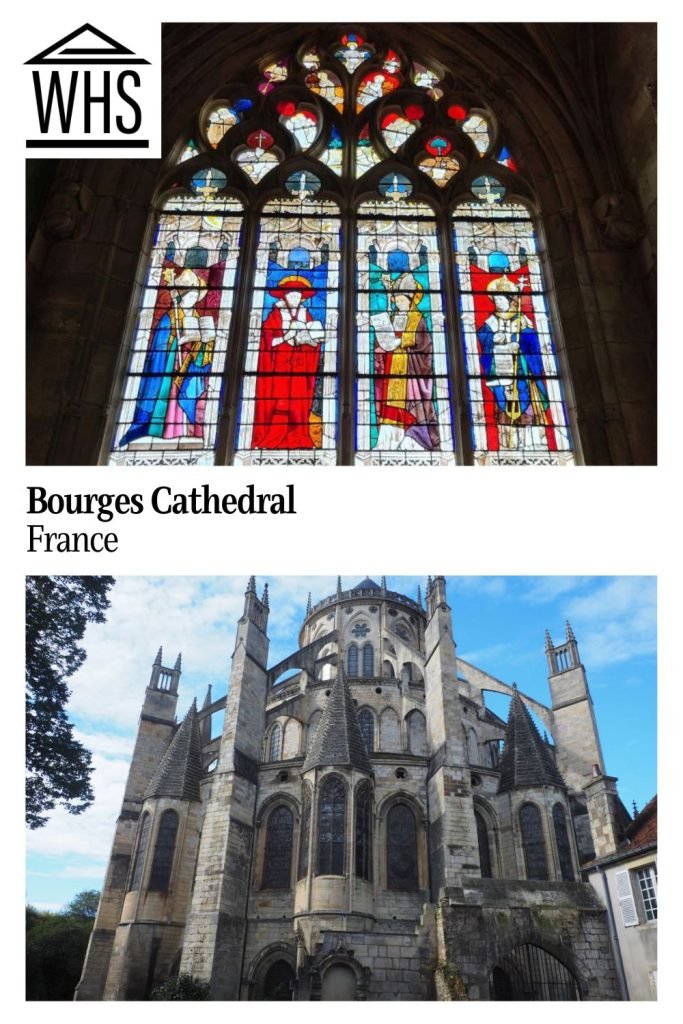
Disclosure: This article contains affiliate links. Making a purchase through an affiliate link will mean a small commission for this website. This will not affect your price. Privacy policy.
Why is Bourges Cathedral a UNESCO World Heritage site?
The main reason this cathedral has the UNESCO designation is simply its “striking beauty,” according to UNESCO, “combining masterly management of space with harmonious proportions and decoration of the highest quality.” Besides its beauty, its design was influential in terms of other Gothic cathedrals, even though it is unlike them in some key ways.
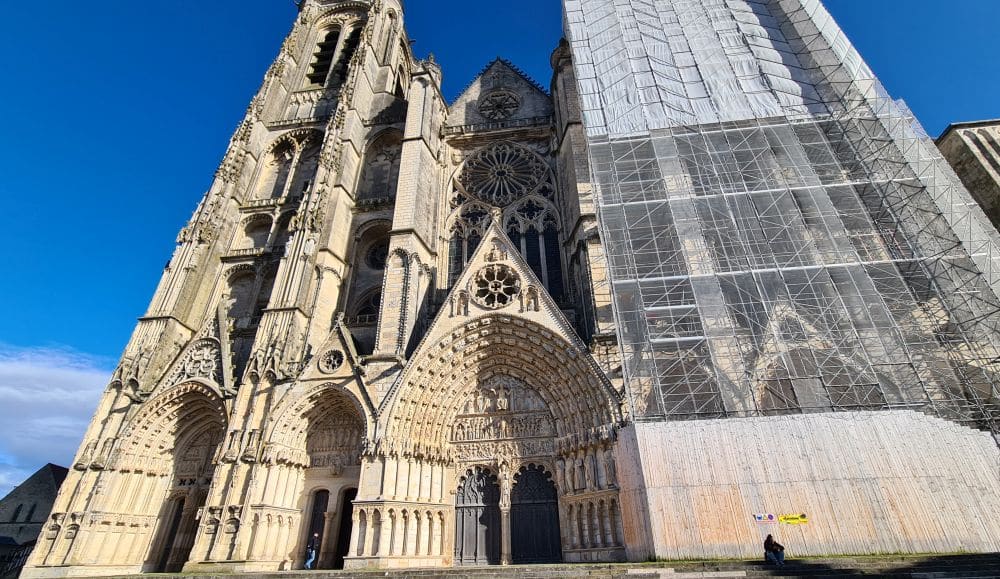
What can you expect on a visit to the Cathedral of St. Etienne?
There are a couple of things worth noticing in the cathedral that are unusual. First of all, as you approach, assuming you approach from the plaza where the visitor information booth is, you’ll notice the flying buttresses. Flying buttresses are not unusual on the great cathedrals of Europe, but these are double flying buttresses: since the side naves are progressively smaller than the central nave of the church, the buttresses rest on the lower naves, in pairs one above the other.
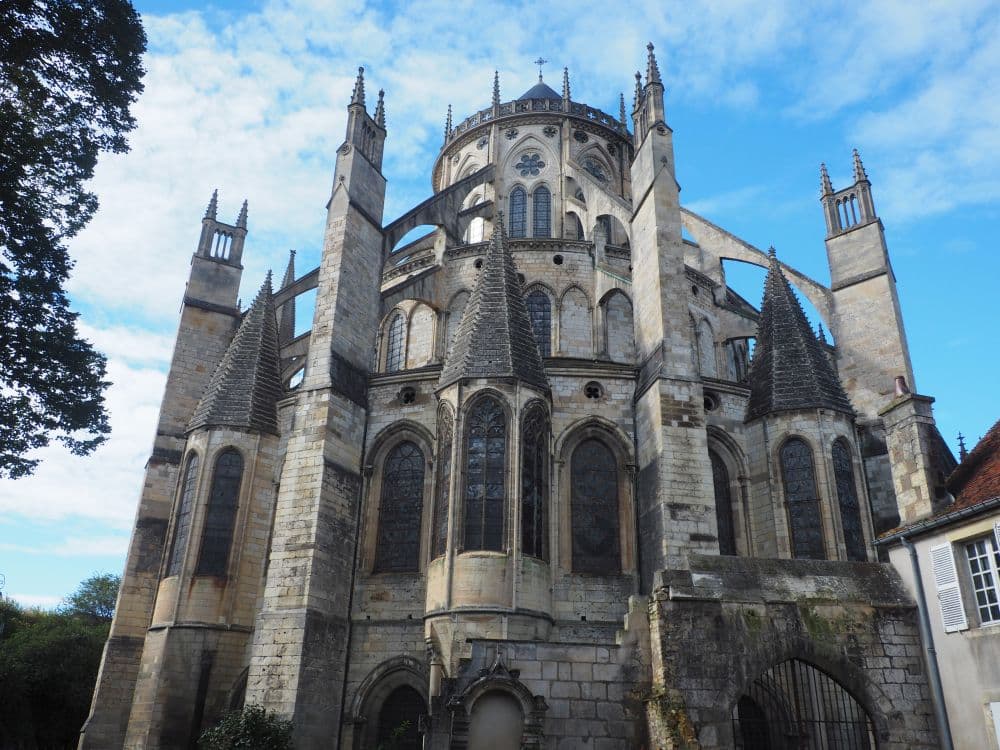
Entering through the grand front entrance, stop and take in the five archways across the front of the cathedral, and the two somewhat mismatched square towers that frame it. When I was there recently two of the archways and one of the square towers were covered in scaffolding, unfortunately. But the larger central archway is magnificent. It portrays the Last Judgement in the half-circular bas-relief above the enormous doors, framed by arches of saints and angels.
Most of the larger saints to the left and right of the center archway have lost their heads. This is a common feature at ancient Catholic churches and cathedrals in France due to the the fervor of the French Revolution. But the central bas-relief survived intact.
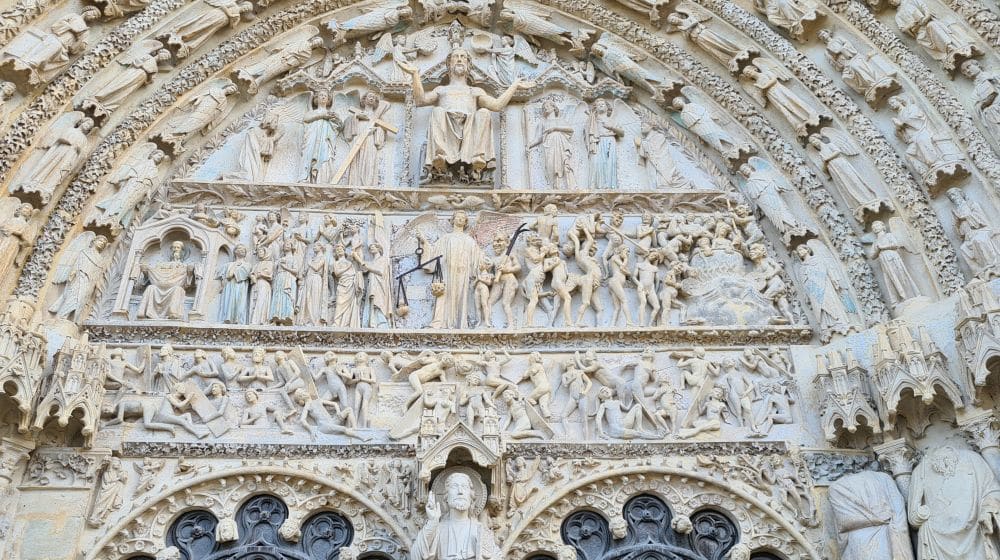
When you enter the cathedral, take in the sheer size of the place. The central nave is 37 meters high (122 feet). You’ll notice the effects of the airy flying buttresses: the stained-glass windows are very large. They date from the 13th-16th centuries, and allow ample light inside. The windows have retained their deep colors and glow brightly, especially if it’s a sunny day. It is easy to imagine the sense of awe that medieval citizens, on entering this space, must have felt.
This cathedral is also unusual in that, unlike other Gothic churches, it is not shaped like a cross. Rather, it is a long rectangle with one flat end (the entrance with the archways and the towers) and one rounded end behind the altar. The central nave is the widest and tallest, framed by impossibly thick Gothic pillars – remember this was all built by hand! The two naves on either side are lower, and the outside naves are smaller still.
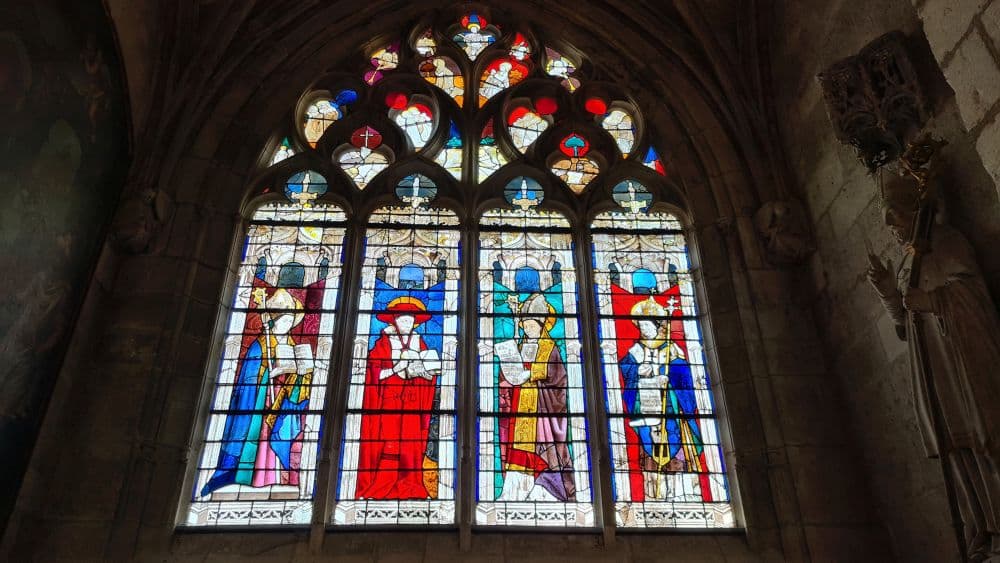
Is Bourges worth visiting?
I’m not sure I would make a separate trip to see Bourges, but if you are passing through the center of France, it’s certainly worth a stop. The town around it is lovely, with lots of half-timbered houses and a remarkably un-touristy vibe.
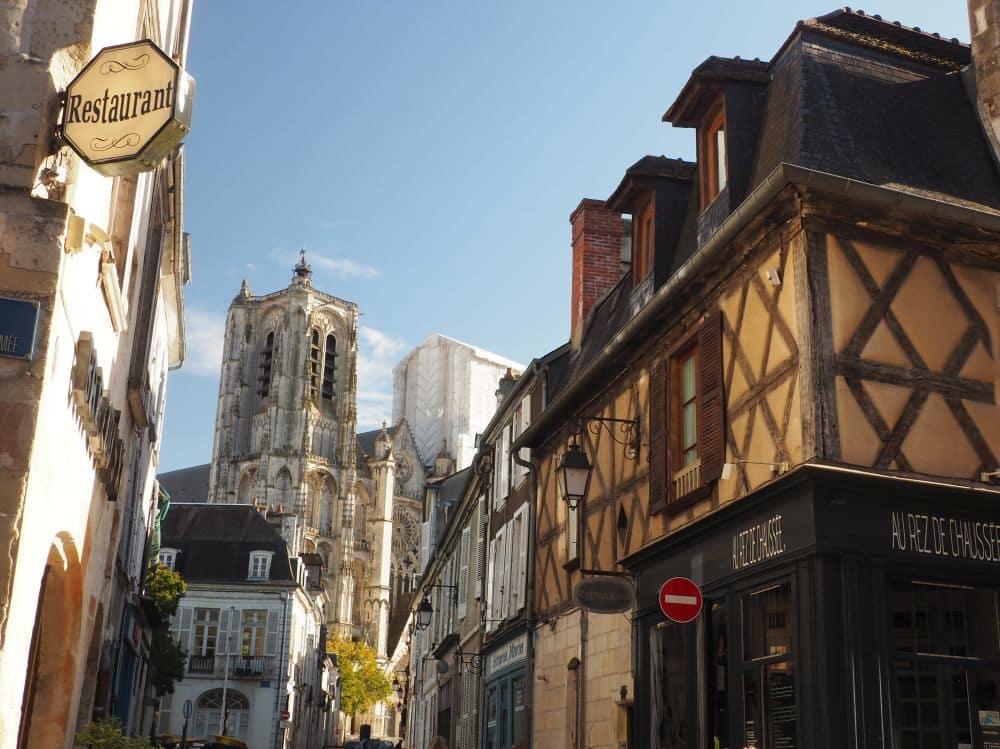
What sorts of travelers would like Bourges?
Anyone who is into historical architecture in general or Gothic architecture in particular would enjoy seeing this cathedral.
Tips for visiting Bourges Cathedral
Take your time and look closely at the stained-glass windows in the rounded east end of the church. They’re gorgeous and detailed and, unlike at most Gothic cathedrals, they’re close enough to see well.
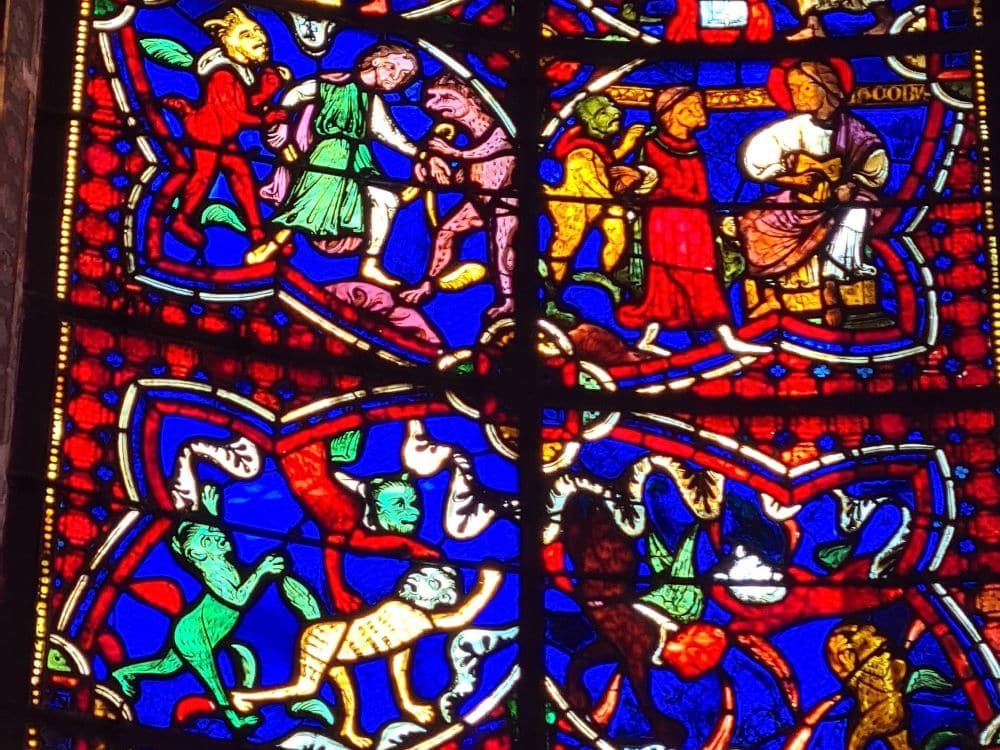
The cathedral also has a crypt which you can only visit on a tour. While entrance to the cathedral is free, this tour is not. You can buy a combined ticket for this tour and the Jacque-Coeur Palace, also in Bourges. When I visited the crypt, the tour was in French, and there didn’t seem to be any other option. Leaflets give the main points of the tour, but the guide added lots of detail that I didn’t catch with my very rusty French.
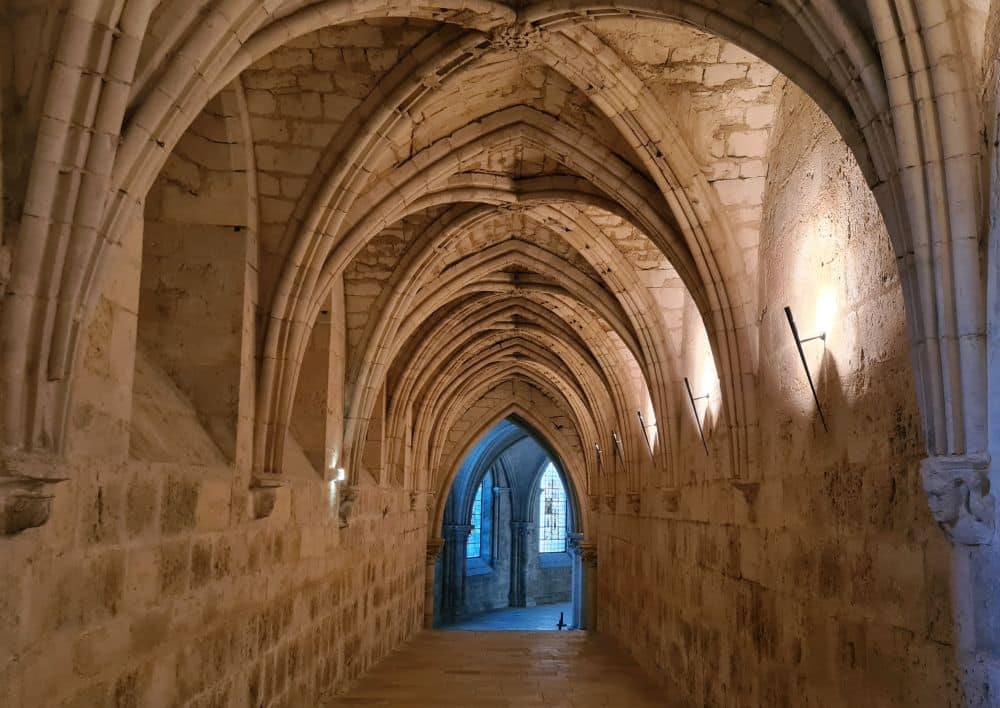
In any case, the crypt isn’t really a crypt. Rather, it’s an additional level of the cathedral that was added simply to fill up a lower piece of ground so that the cathedral could be built on top of it. Nevertheless, it is in the same Gothic style as the main church. The area is used now to display some remnants of the original Romanesque church on the site as well as a smattering of Gothic statuary.
After seeing the cathedral, take at least a bit of a stroll around the town itself. The visitor center right outside the cathedral can give you a map that shows the main highlights to see.
Consider staying in Bourges to get a taste of the town. We stayed on the edge of town and found it a very pleasant place.
Book accommodations in Bourges.
If you’re traveling by car, as we did, there are other sites to see in day trips from Bourges, particularly some of the Loire Valley chateaux and the lovely little UNESCO village of Vezelay. In addition, the wine country of Sancerre is less than an hour away.
Compare rental car prices for your trip.
Where is Bourges Cathedral?
Bourges Cathedral is right in the center of Bourges town, which is right in the center of France.
- By train: Bourges is about 3 hours from Paris, 4.5 hours from Lyon and 3 hours from Tours.
- By car: Barring traffic jams, you can reach Bourges by car from Paris in 3 hours, Lyon in 3.5 hours, and Tours in 2 hours.
For more information about Bourges Cathedral, its opening hours and admission fees, see its official website.
Have you been to Bourges Cathedral? If so, do you have any additional information or advice about this UNESCO World Heritage site? Please add your comments below!


